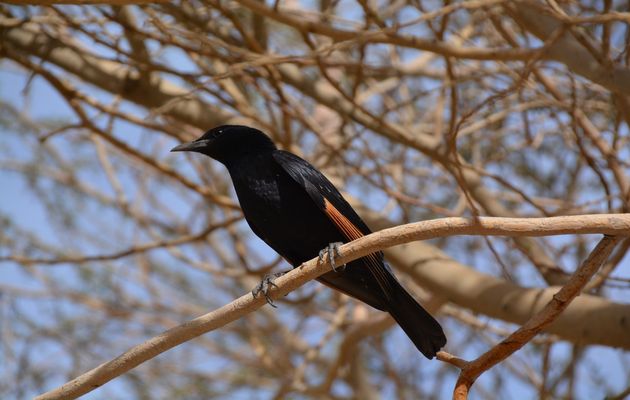Tristram’s starling
The bird got its name from the English clergyman, Henry Baker Tristram, who took an interest in the Bible's natural history, and therefore in the fauna of Israel.
16 APRIL 2017 · 11:00 CET

Then Jesus was led by the Spirit into the wilderness to be tempted by the devil. After fasting forty days and forty nights, he was hungry. (Matthew 4:1-2)
Anyone who spends as many days in the desert as Jesus did, soon becomes the centre of attention for the curious animals that inhabit such environments.
Sometimes we tend to think that there are no living beings in the desert. But nothing could be further from the truth. However, most animals are active only when the conditions are favourable, as is the case at dawn and during twilight, when they can avoid the intense daytime heat, and extreme cold of the night-time.
During these difficult hours they remain in their burrows, under the shadow of the few trees or bushes growing there, or maybe buried in the sand or under the stones. Foxes, birds, reptiles and insects thrive in this way in most of the deserts of the planet.
Tristram's starling (Onychognathus tristramii), like this specimen which I photographed on an acacia tree in the Judea desert, belongs to a species that is endemic in Israel, Jordan and parts of Saudi Arabia. These are the only places in the world where they can be found: always in arid, desert regions.
The bird got its name from the English clergyman, Henry Baker Tristram, who took an interest in the Bible's natural history, and therefore in the fauna of Israel. He wrote, among other works, two interesting books on this subject: The Natural History of the Bible (1867) and The Flora and Fauna of Palestine (1884).
Now you can see many Tristram's starlings, with their characteristic orange stripes, hovering around tourists or picking at crumbs of bread on the tables in restaurants near the Dead Sea.
They always show both great skill and boldness, as they know that humans are an inexhaustible source of food, and they will not cause them any harm.
I am convinced that these nimble birds also approached the Master while he was in the desert, two thousand years ago. Perhaps they did so out of instinctive curiosity, but also expecting some kind of food from him.
It occurs to me that these dark birds, albeit unconsciously, somehow reflected by their behaviour the fact that Jesus was and still is the source of all life, not only physical life, but especially spiritual and eternal life. Because Christ challenges all of us to approach him, and stop turning our backs.
Published in: Evangelical Focus - Zoe - Tristram’s starling
